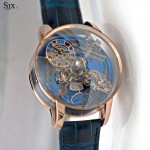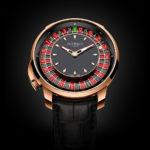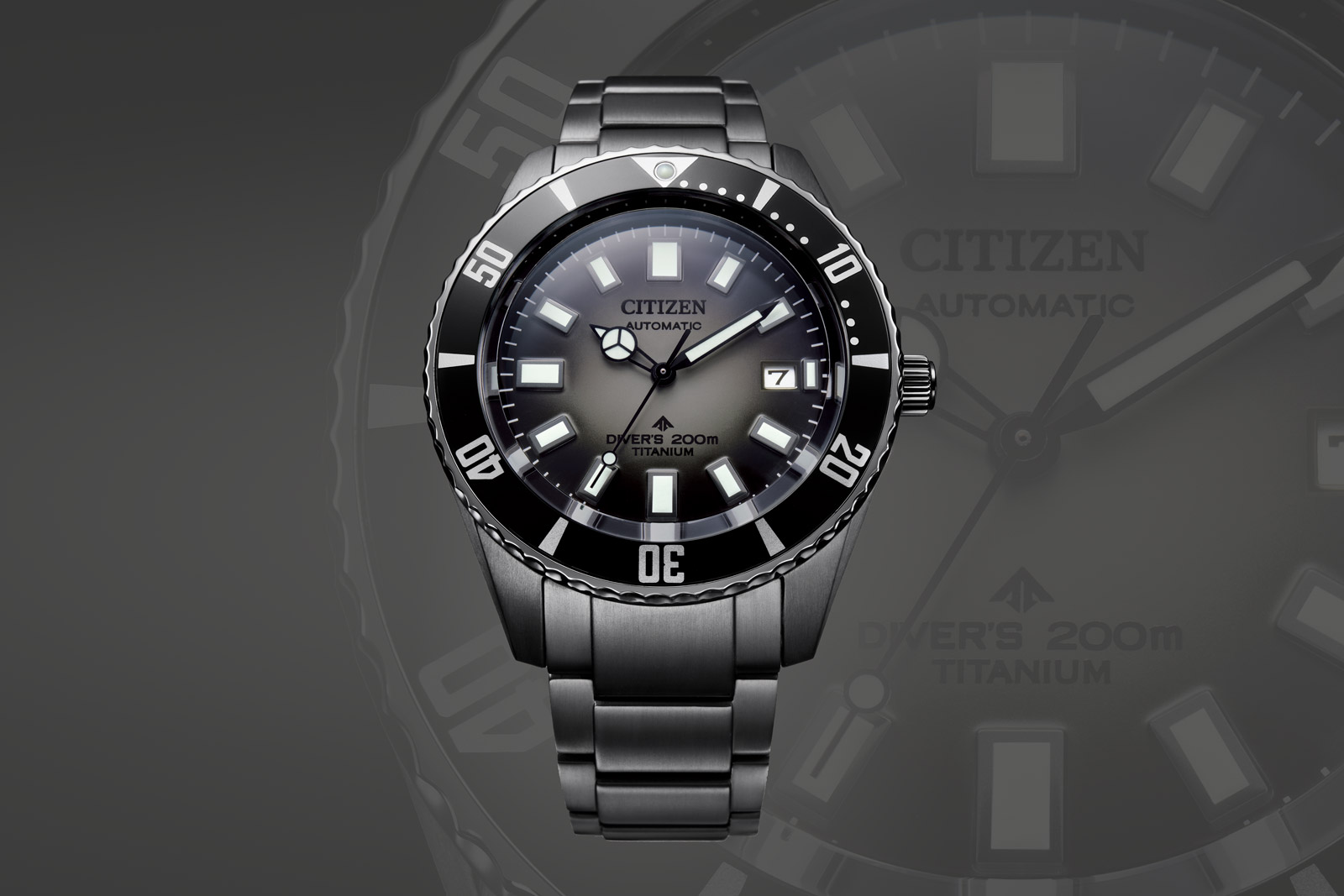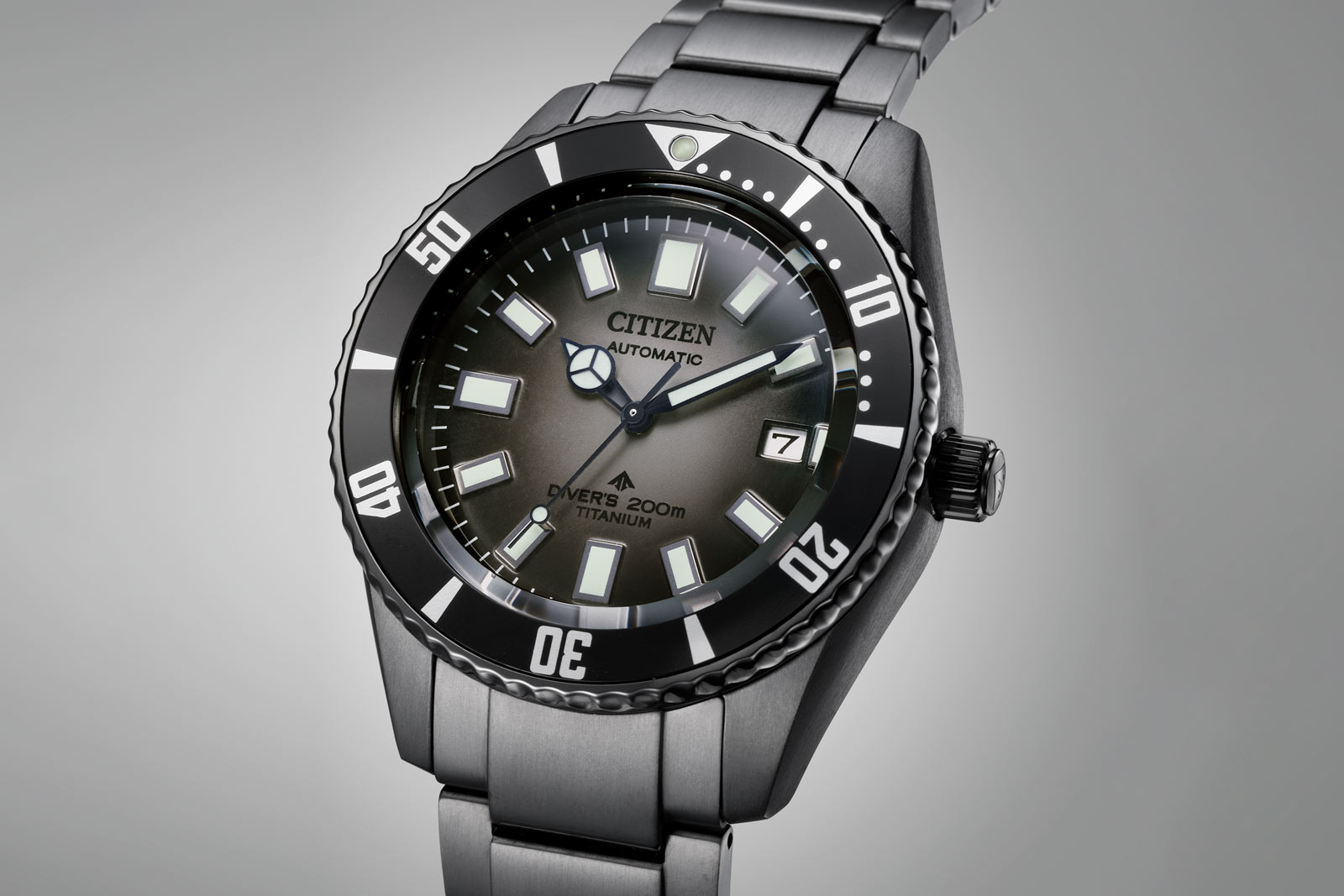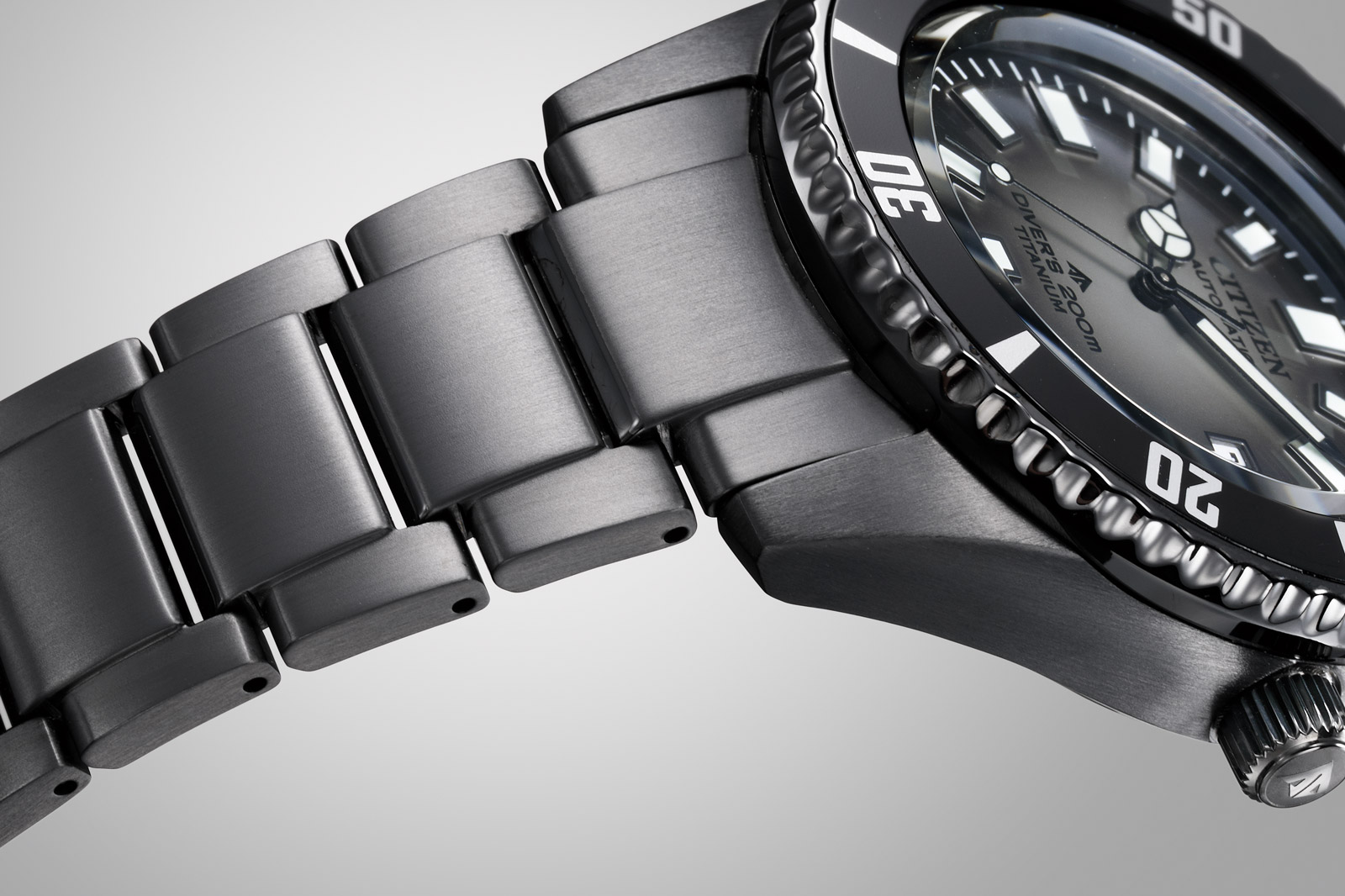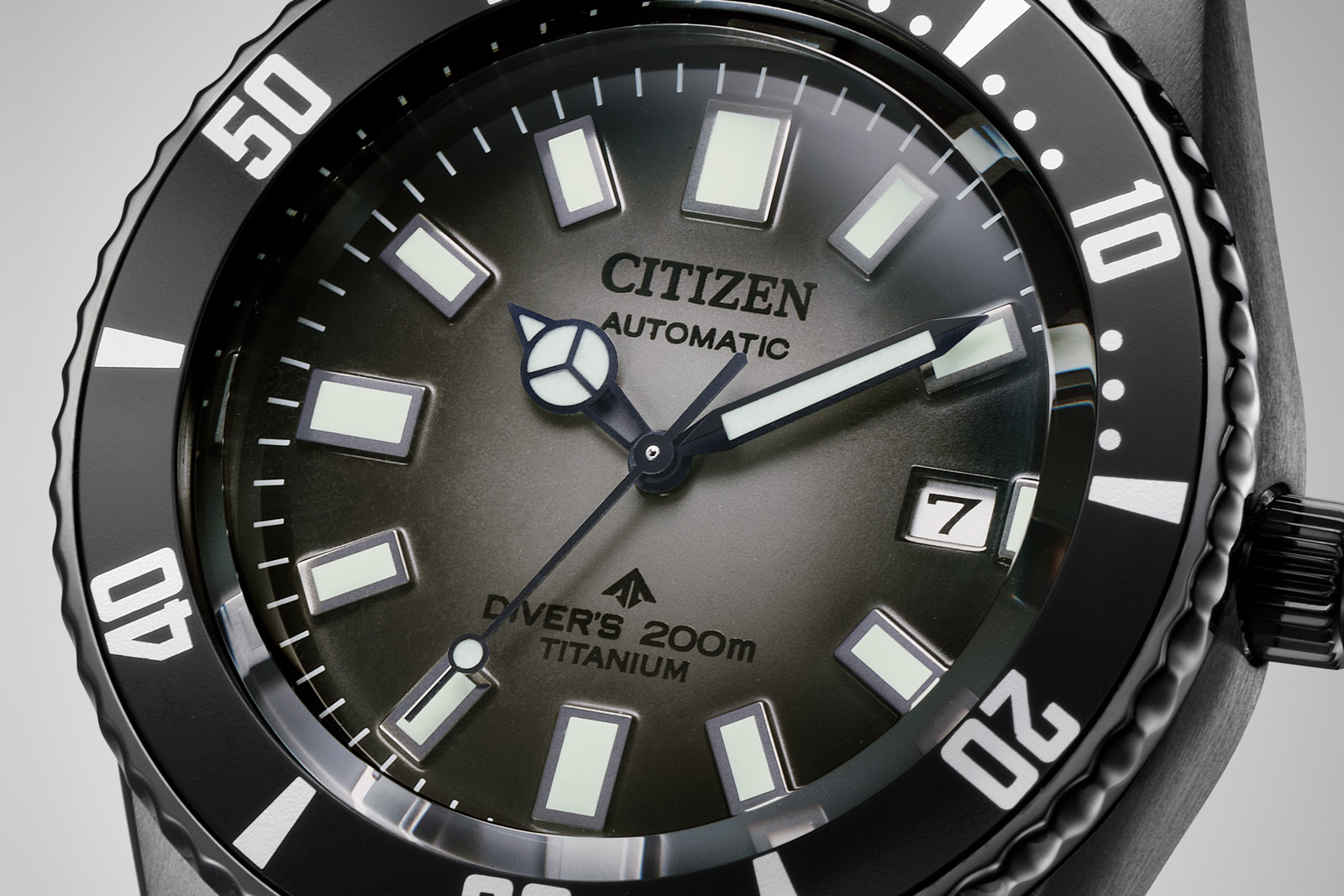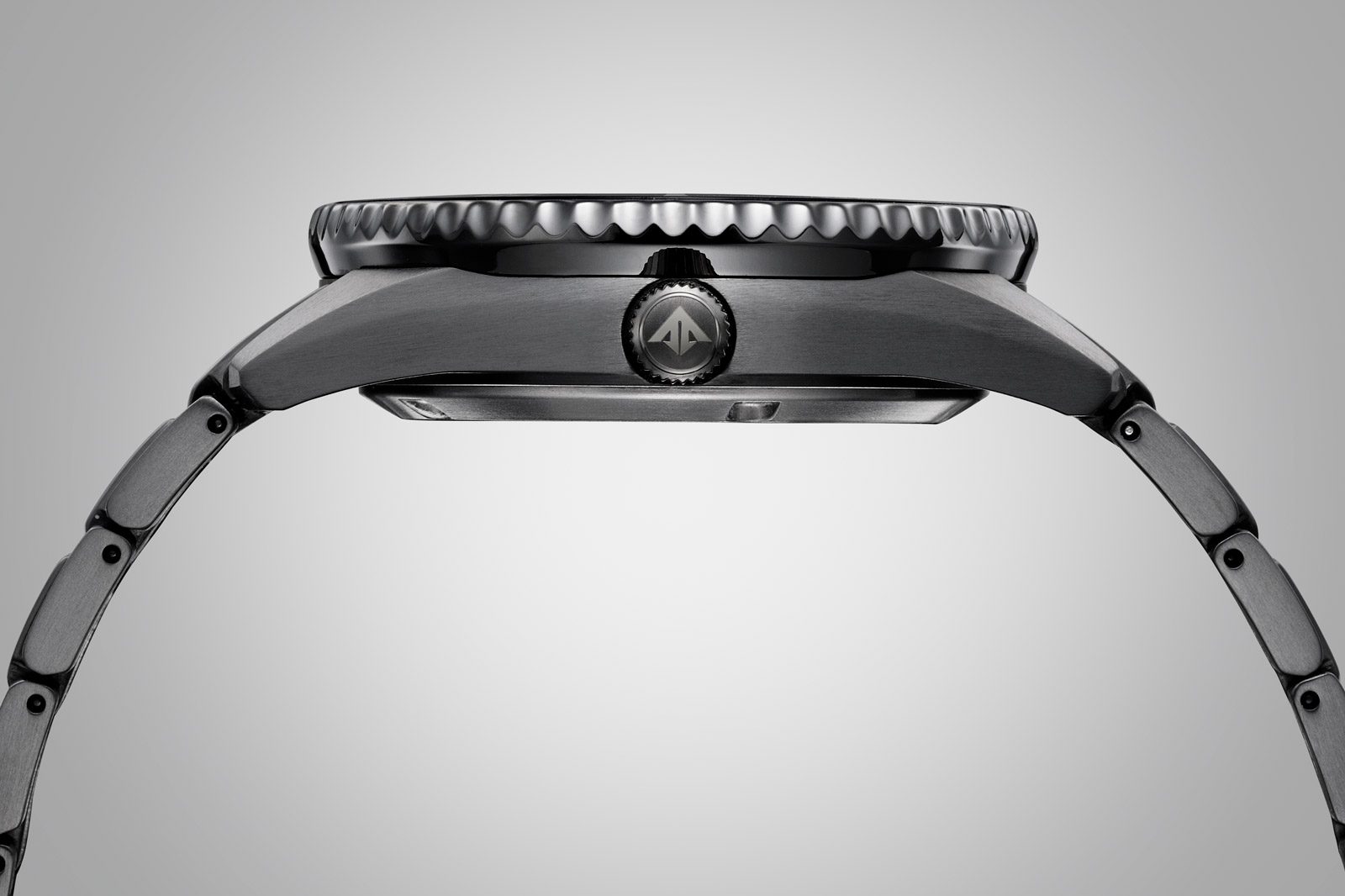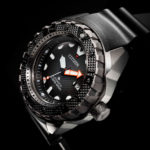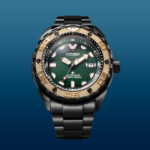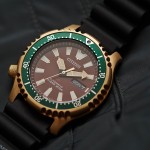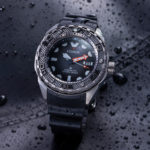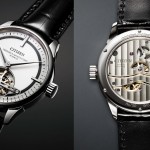Hands On: Jacob & Co. Astronomia Revolution
Over the top aesthetics and impressively engineered.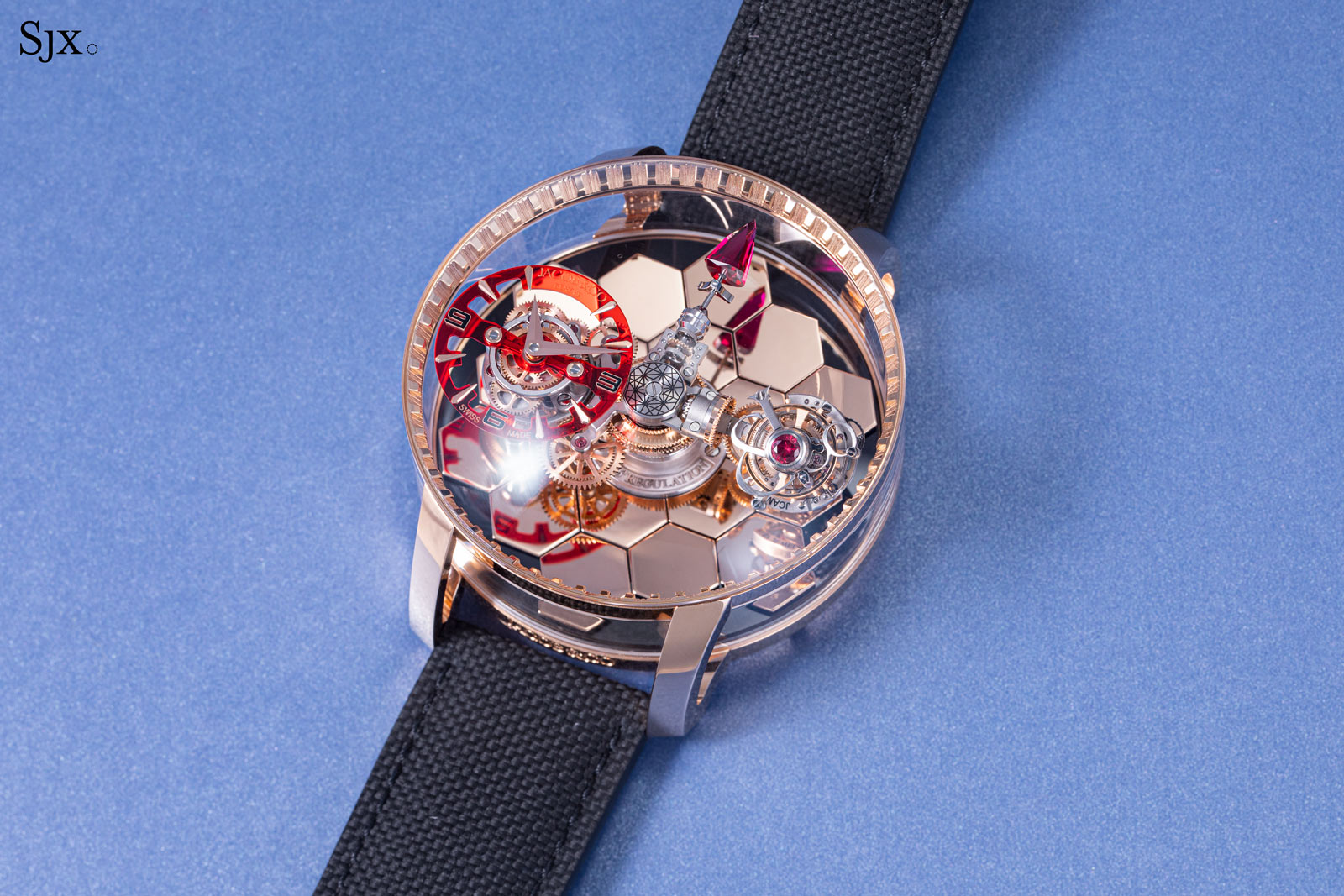
Historically known for its over-the-top jewelled watches and oversized complications, Jacob & Co. recently debuted a watch that is very much quintessential Jacob, but surprisingly novel in mechanical terms. The Astronomia Revolution sticks to the distinctive, extra-large styling that defines the model, but contains an all-new movement that combines several complex assemblies into an even more complex movement, all in the name of a dynamic, fast-rotating display.
Carrying the tourbillon and time display, the carousel is impressively quick and completes one revolution a minute, a feat made possible by a one-sixth-of-a-second constant-force mechanism and a differential for the time display. The kinetic nature of the dial means this is unlike any other mechanical watch.
Initial thoughts
The Astronomia Revolution made it into my list of notable complications unveiled at Watches & Wonders earlier this year:
“[The] Revolution seems like yet another variant of the New York jeweller’s bestselling and bulbous timepiece… Except that it is not… While past versions of the Astronomia required between ten to 20 minutes or more for the carousel to complete one rotation, the Revolution does it in one minute [and] functions as a minute hand. To move a component that large at such a speed is unprecedented…”
Which pretty much sums it up. It looks like a typical Jacob & Co. watch, but is much more interesting mechanically. That is because the movement goes against the prevailing conventions of movement construction. The physics of mechanical movements dictate that the time displays elements are either large and slow moving, like Urwerk’s rotating cubes, or light and fast moving, like a lightning seconds chronograph.
The Astronomia Revolution manages to propel a large and heavy time display made up of the central carousel at a relatively high speed of one rotation a minute. This is likely the only watch with such a large time display assembly moving at this speed.
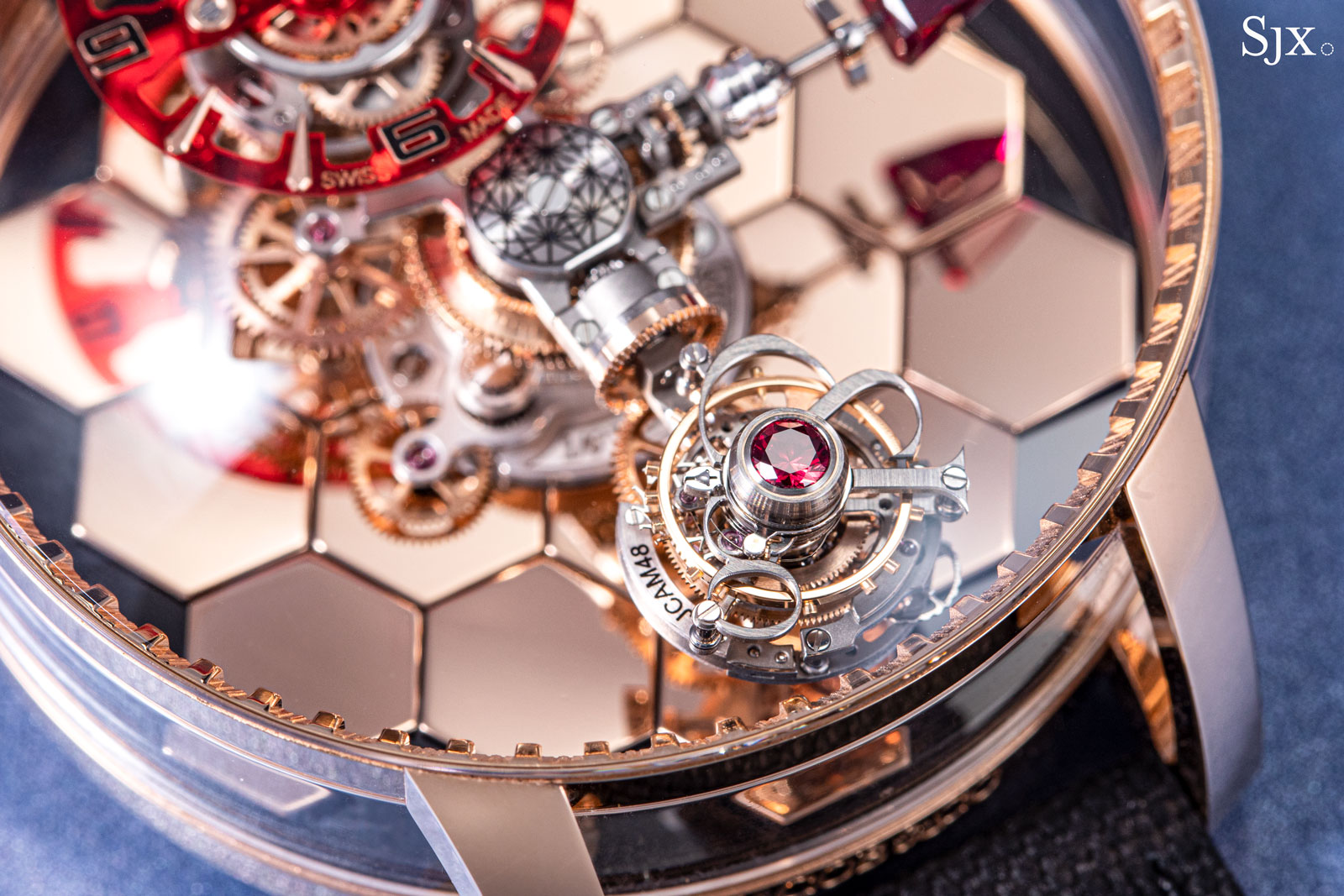
The fundamentals of the movement are straightforward but challenging to execute, explaining why this hasn’t been done before. Maintaining equilibrium for the key aspects of the movement, namely the energy required, the rate of energy discharge, and the complex movement itself, is an accomplishment that deserves praise. Unsurprisingly, the movement was developed by a complications specialist with a reputation for technical competence, Concepto.
The movement construction does come with some drawbacks, most apparent being the visible motion of the carousel. It travels one full rotation a second, but does so in tiny steps that are visible when observed closely. This is a consequence of the charging and discharging of the constant force every sixth of a second, but results in subtly wobbly movement of the carousel.
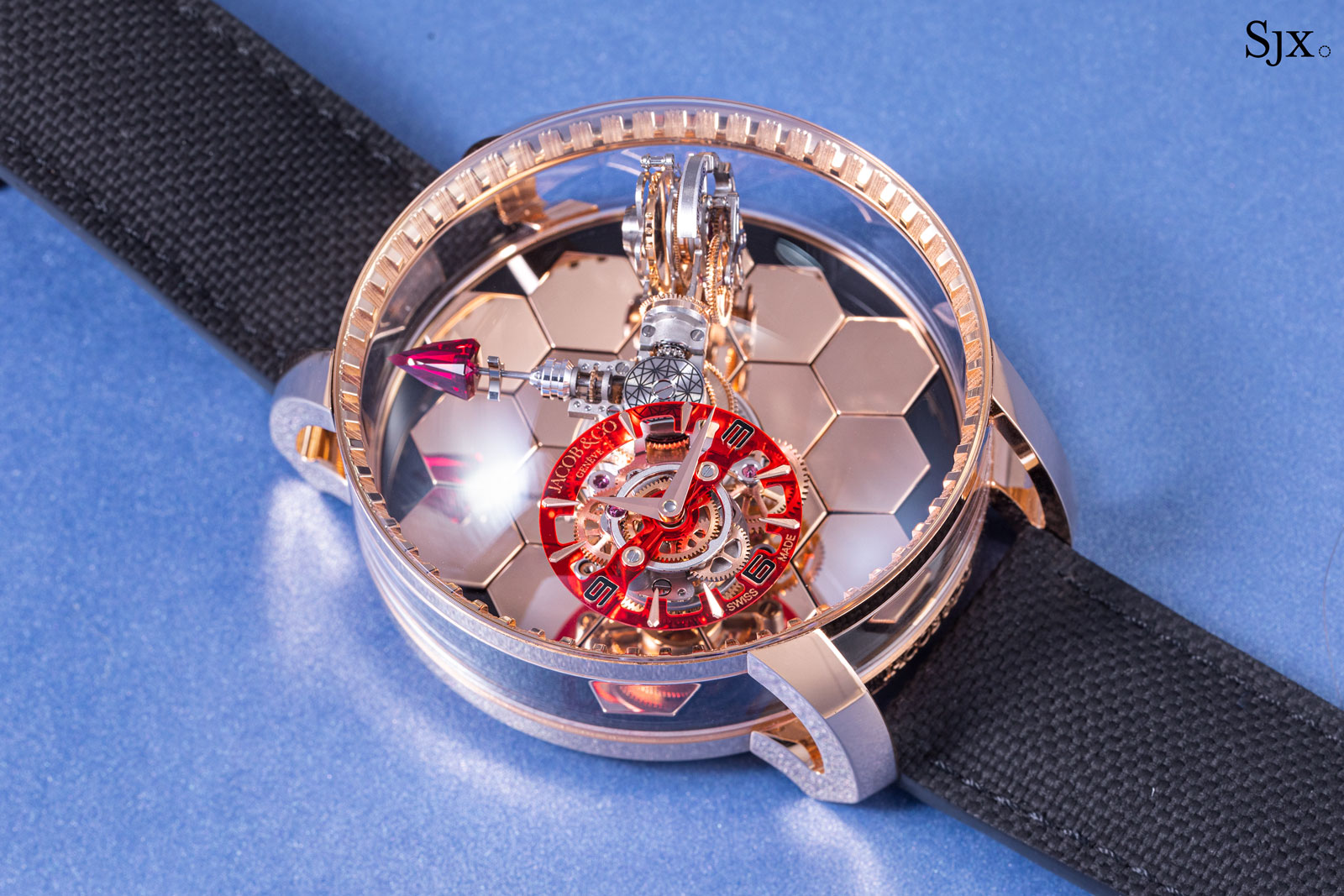
And then there is the size and style. The Astronomia Revolution is small by Astronomia standards, but still a huge watch. The extravagant design might not be for everyone either, though I like it. The design manages to retain the over-the-top Jacob & Co. spirit while being slightly more restrained than most of the brand’s offerings, some of which feature tarantulas, dragons, and Don Vito Corleone.
At US$600,000, the Astronomia Revolution is priced on par with past Astronomia models. The watch is very expensive in absolute terms, but fair in the context of the watch and others like it. In the particular niche of watchmaking Jacob & Co. occupies, and compared to the likes of Richard Mille and Hublot, the Astronomia Revolution is reasonably priced.
Exuberant design
The design of the Astronomia Revolution is sci-fi meets bling. The case is a massive 47 mm by 27 mm, meaning it is almost half as tall as it is wide at its thickest point.
It is enormous, but doesn’t feel as enormous as its measures because of the airy case that is almost all sapphire crystal, along with shortly, downward angled lugs. In other words, it sits surprisingly well on the wrist for a 47 mm watch, but it is still a 47 mm watch.
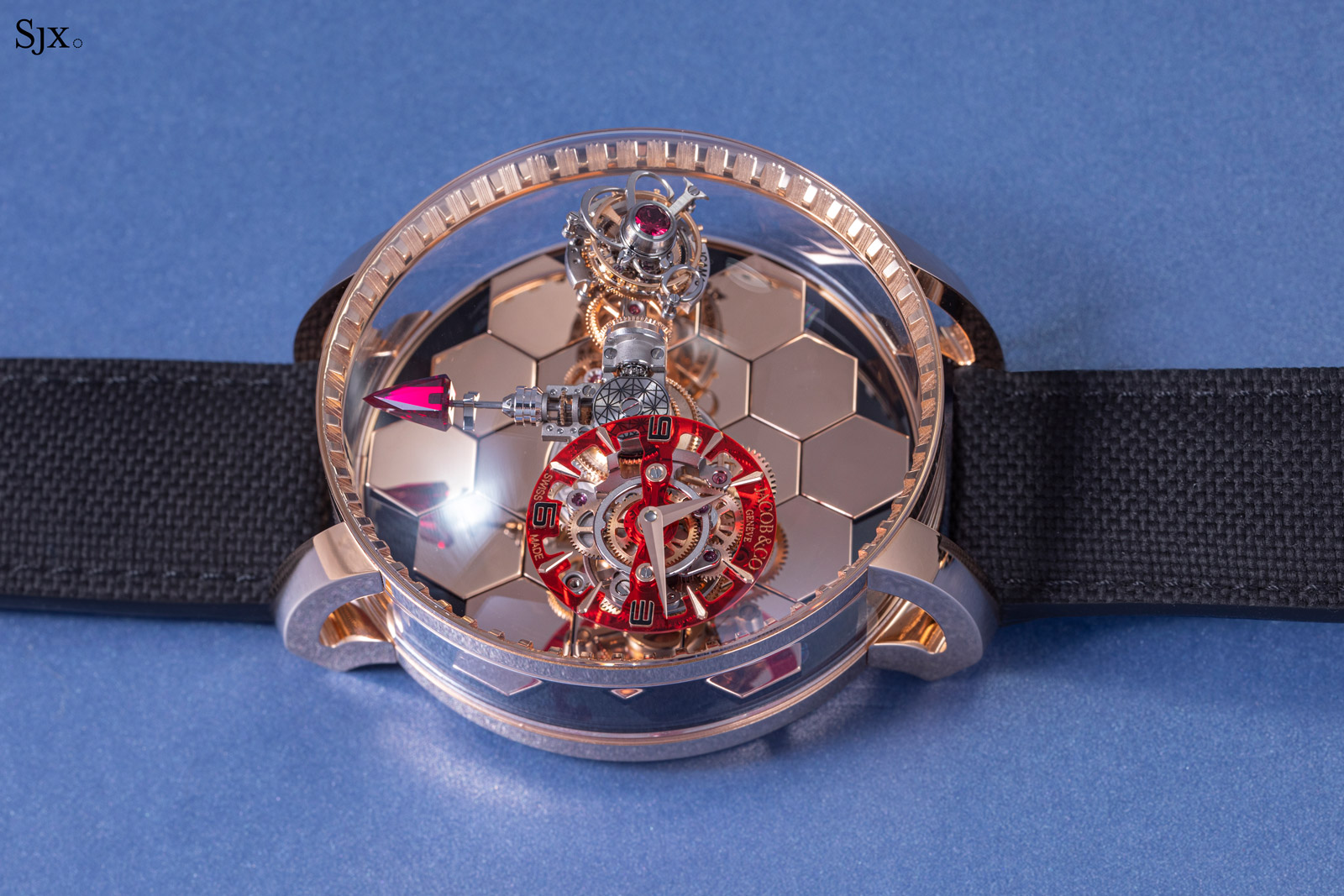
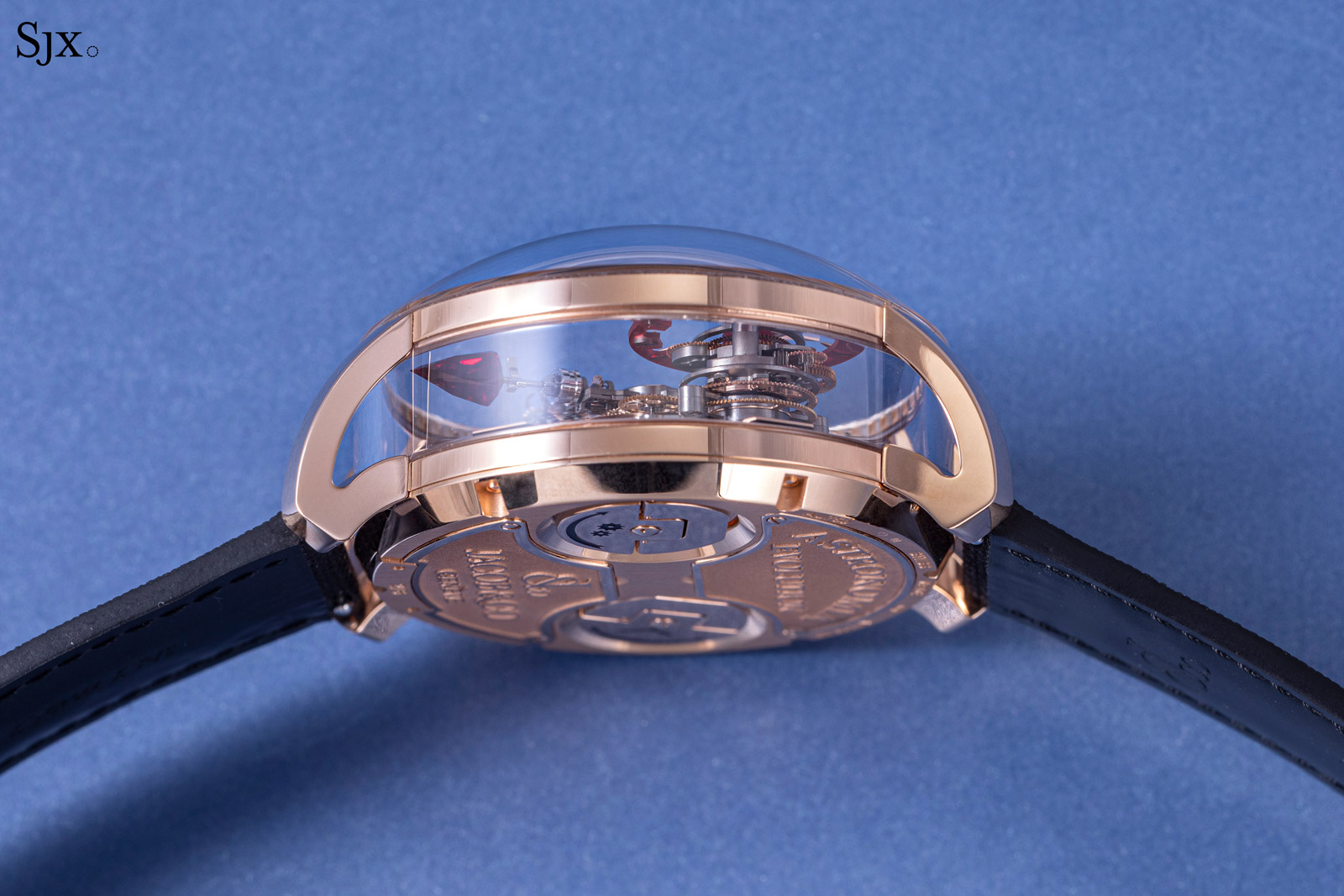
The base of the dial is formed of hexagon-shaped 18k red gold panels inspired by the gold-plated mirror in the James Webb Space Telescope. The panels mimic the mirror of the telescope, but on a miniature scale. As in the telescope, the panels number 18, and are similarly arranged in a gentle bowl form.
Despite their reflectivity, the panels actually give the watch a clean, geometric aesthetic, particularly when compared with the crowded faces of other Astronomia models. The link between the space telescope and the Astronomia is slight at best, but it still looks cool.

And clever mechanics
More interesting than all of the many elements that make up the dial is how they travel. The basic premise of the Astronomia Revolution remains the same as past Astronomia models. A central carousel rotates on its own axis and carries the various complications on extended arms.
Unlike most Astronomia movements that have symmetrical arms, the Astronomia Revolution has three arms that complete one clockwise revolution a minute. One is tipped with the ruby arrow seconds pointer, another has the time display, and the final one is the tourbillon.
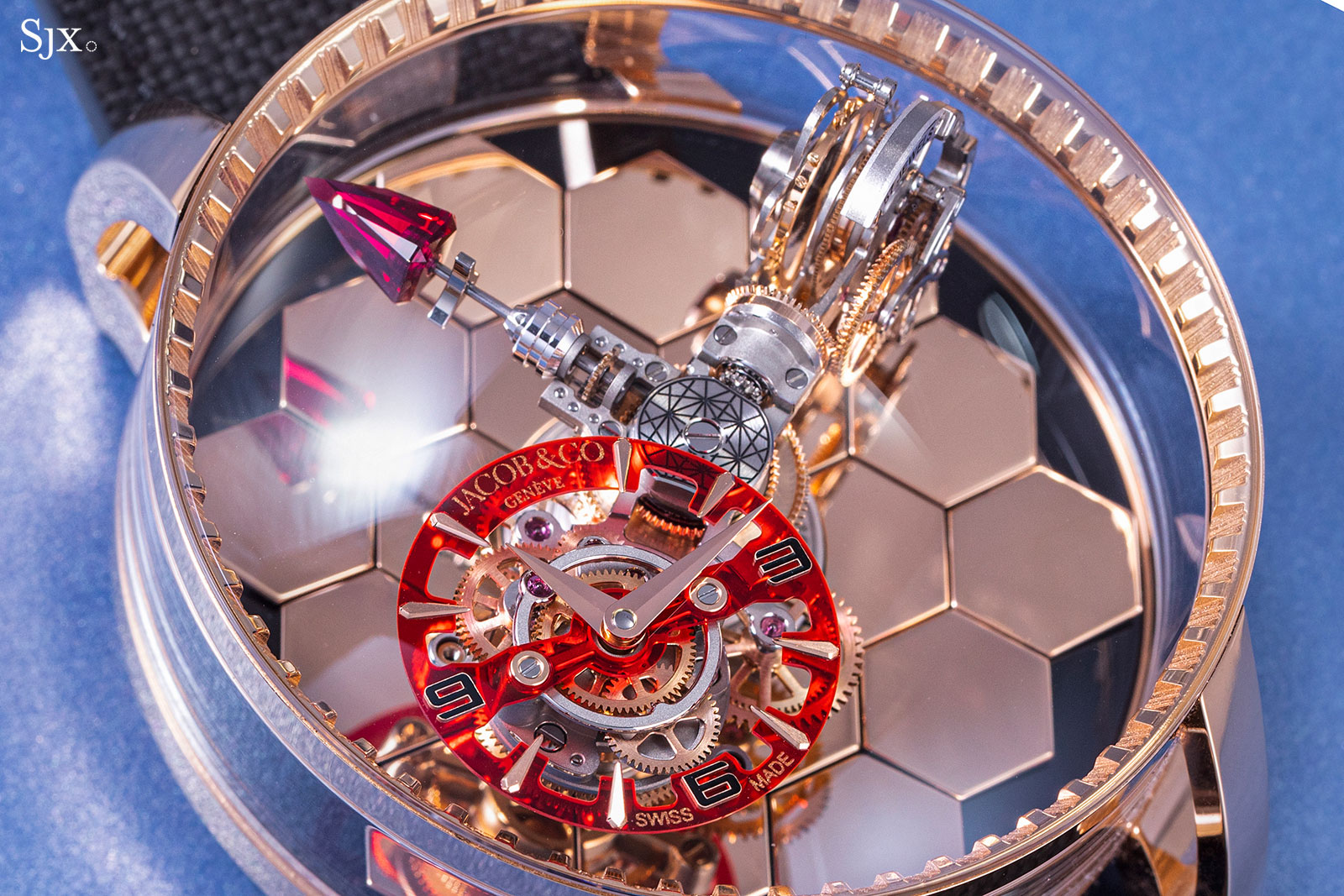
Acting as the seconds hand, the arrow-shaped synthetic ruby makes one round of the dial every minute but it also rotates on its own axis once every 15 seconds.
Colour coordinated with the ruby arrow is the sub-dial for the time, which is an open-worked disc of red polycarbonate. The red sub-dial travels around the dial once a minute, but it has to remain upright throughout its motion in order to show the time correctly. Underpinning its stationary position are differential gears that constantly turn the sub-dial in a counterclockwise direction once a minute. In other words, the sub-dial travels in the opposite direction of the carousel, but at the same rate.
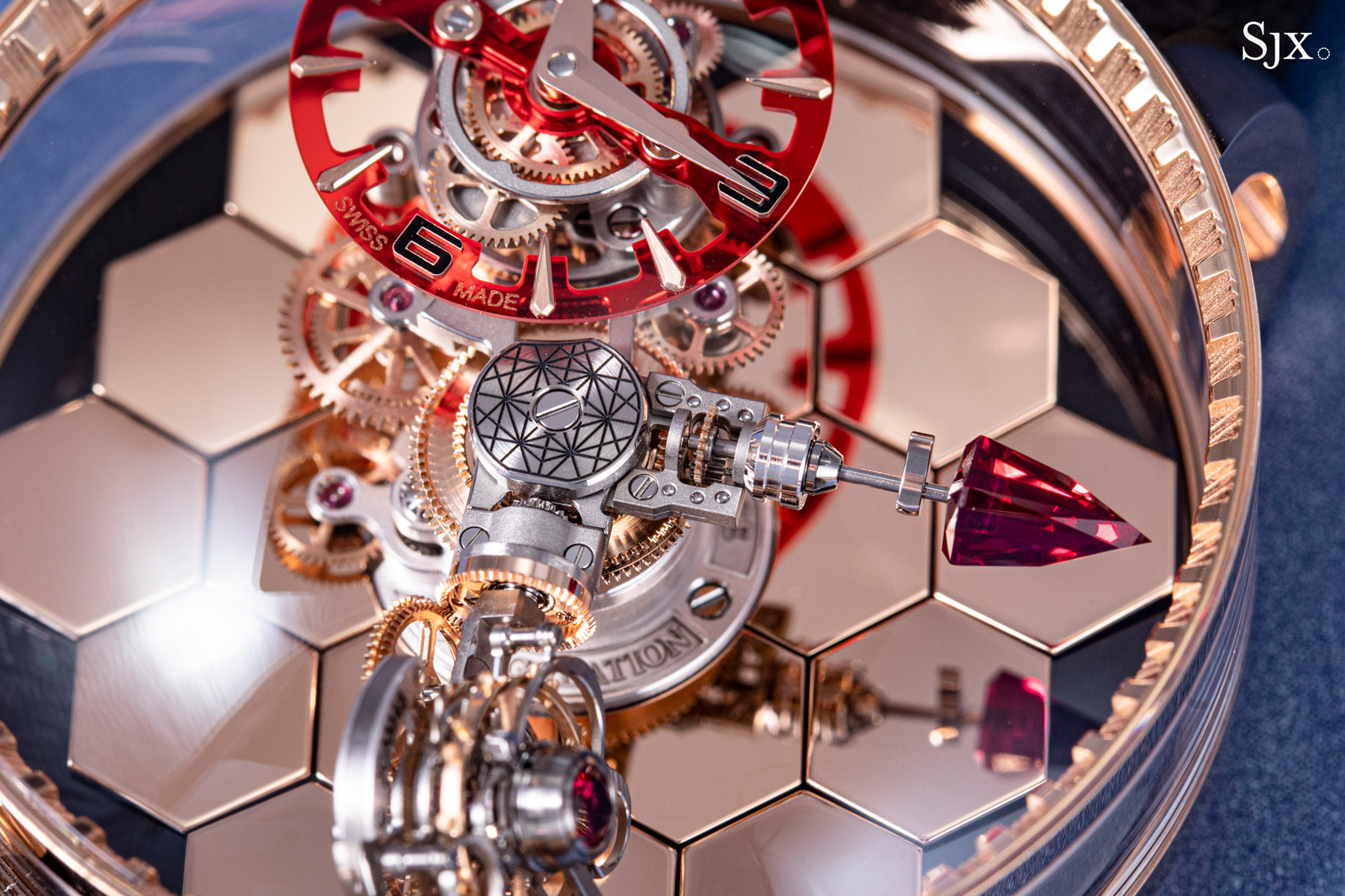
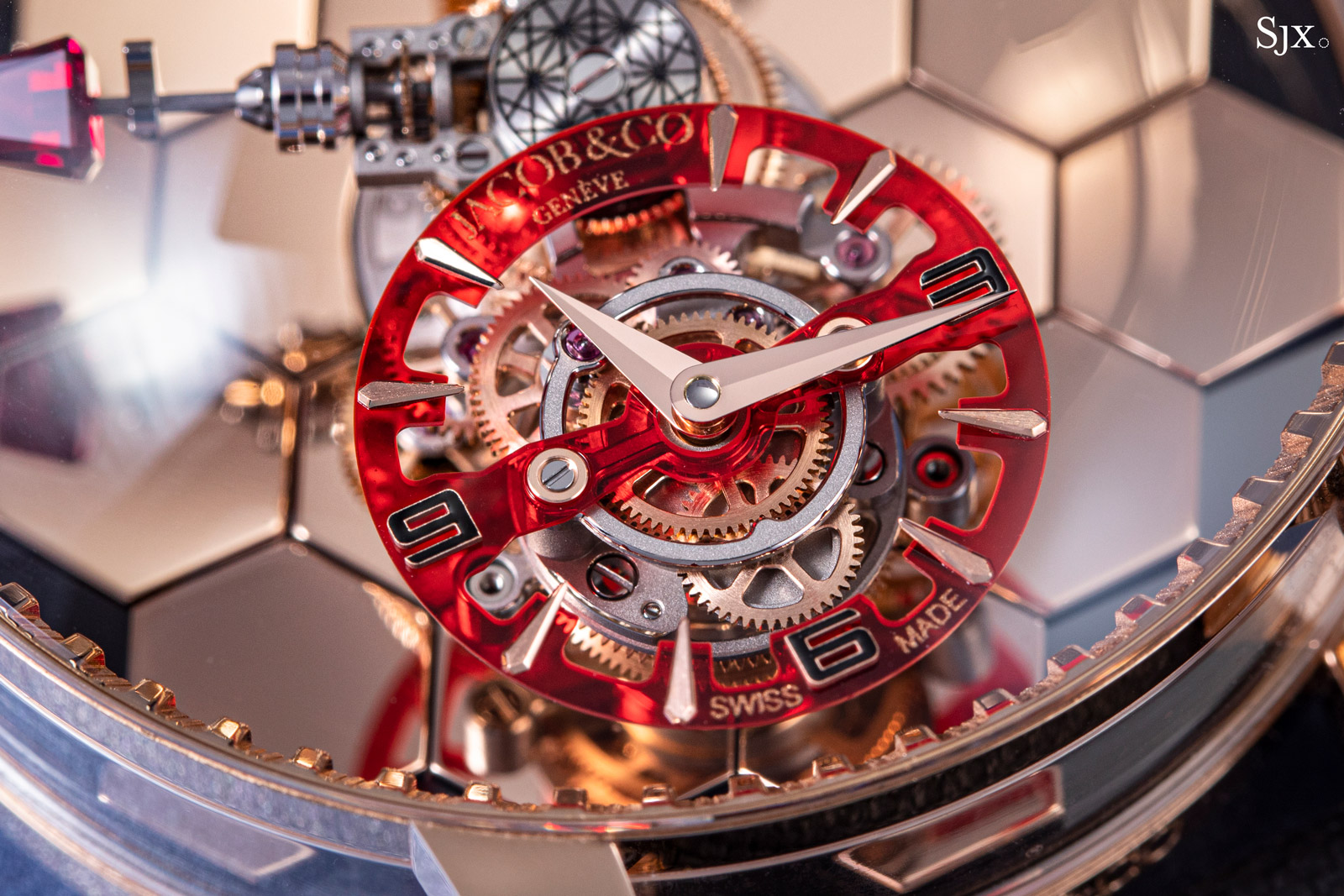
The most complex part of the carousel is the tourbillon, which is double axis in itself but technically a triple-axis set-up.
Taking the form of the Jacob & Co. logo, the tourbillon carriage rotates on its own axis once a minute. Additionally, the carriage rotates on its lateral axis once every 15 seconds as it is driven by the same gear train that turns the ruby arrow at the same speed. But the carousel’s one-minute orbit gives the tourbillon a third axis of rotation, making it a triple-axis tourbillon.

On their own, the various mechanisms like the tourbillon and differential-driven time display are familiar, but their speed of travel is unexpected and impressive. Despite its considerable weight, the carousel goes around the dial once a minute. All prior movements with such complex assemblies, like the Ulysse Nardin Freak or Cartier Astrotourbillon, typically only manage to make one revolution an hour, a speed that is not discernible to the eye.
Jacob & Co. managed to achieve a 10-minute revolution in past models like the Astronomia Maestro, but a 10-minute cycle is still slow enough that it feels tedious watching the carousel move. The Astronomia Revolution, in contrast, has an energetic display that is also intuitive since the carousel doubles as the seconds hand.
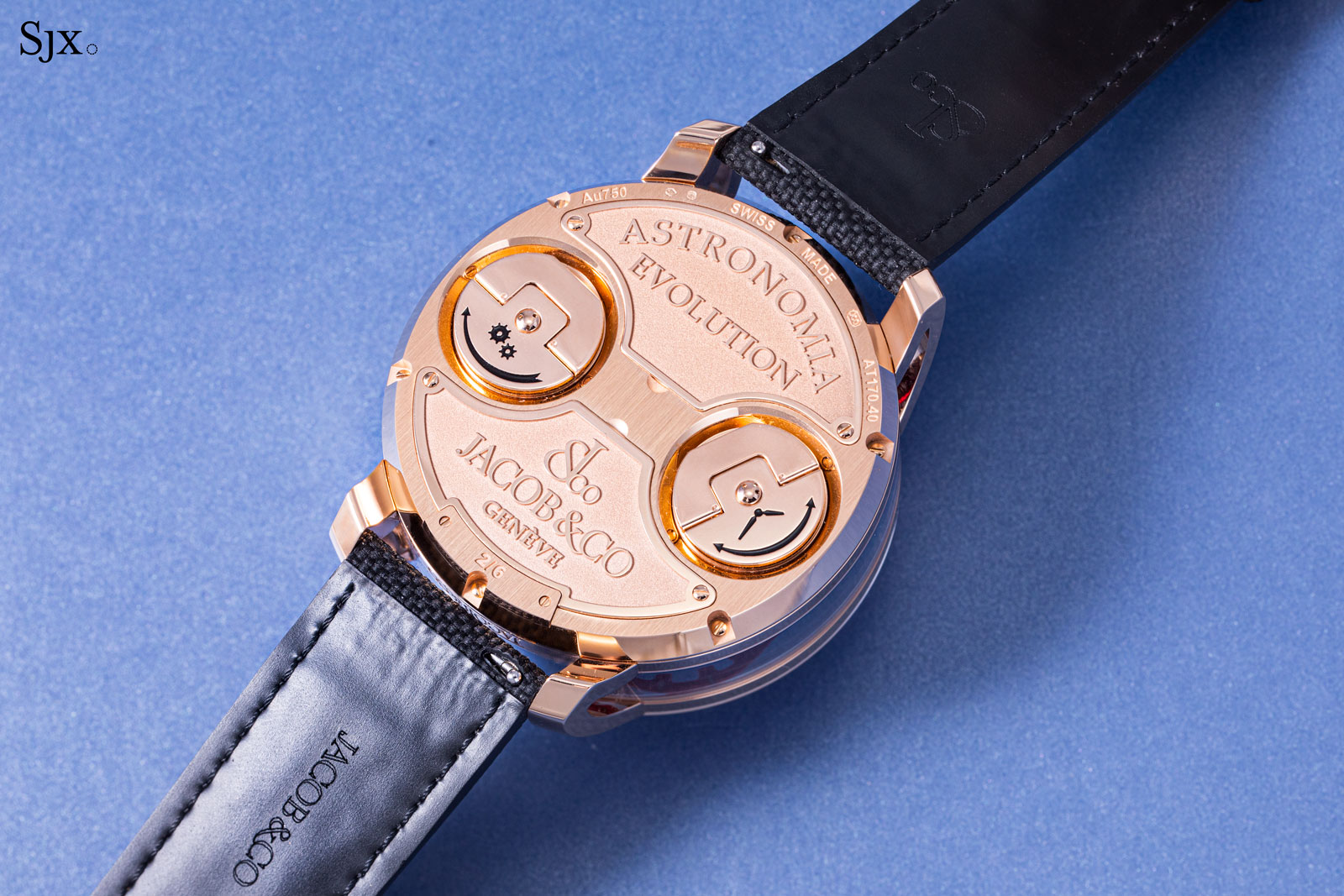
Like other Astronomia models, the Revolution has separate flip-out tabs for winding and setting on the case back
Driving the heavy carousel requires a pair of mainsprings – each longer than the height of an average man – that sit under the dial, but the enormous energy generated by the mainsprings requires a regulated rate of release, necessitating the constant force mechanism.
Integrated within the tourbillon, the constant force mechanism, otherwise known as a remontoir, comprises a tiny spring mounted co-axially with a wheel. This spring is wound up the mainspring and instantaneously released every sixth of a second, providing the impulse that drives the tourbillon and carousel. Although the constant force mechanism is simple in its design, it is effective and also notable for its scale – remontoirs compact enough to fit into a wristwatch tourbillon are few.
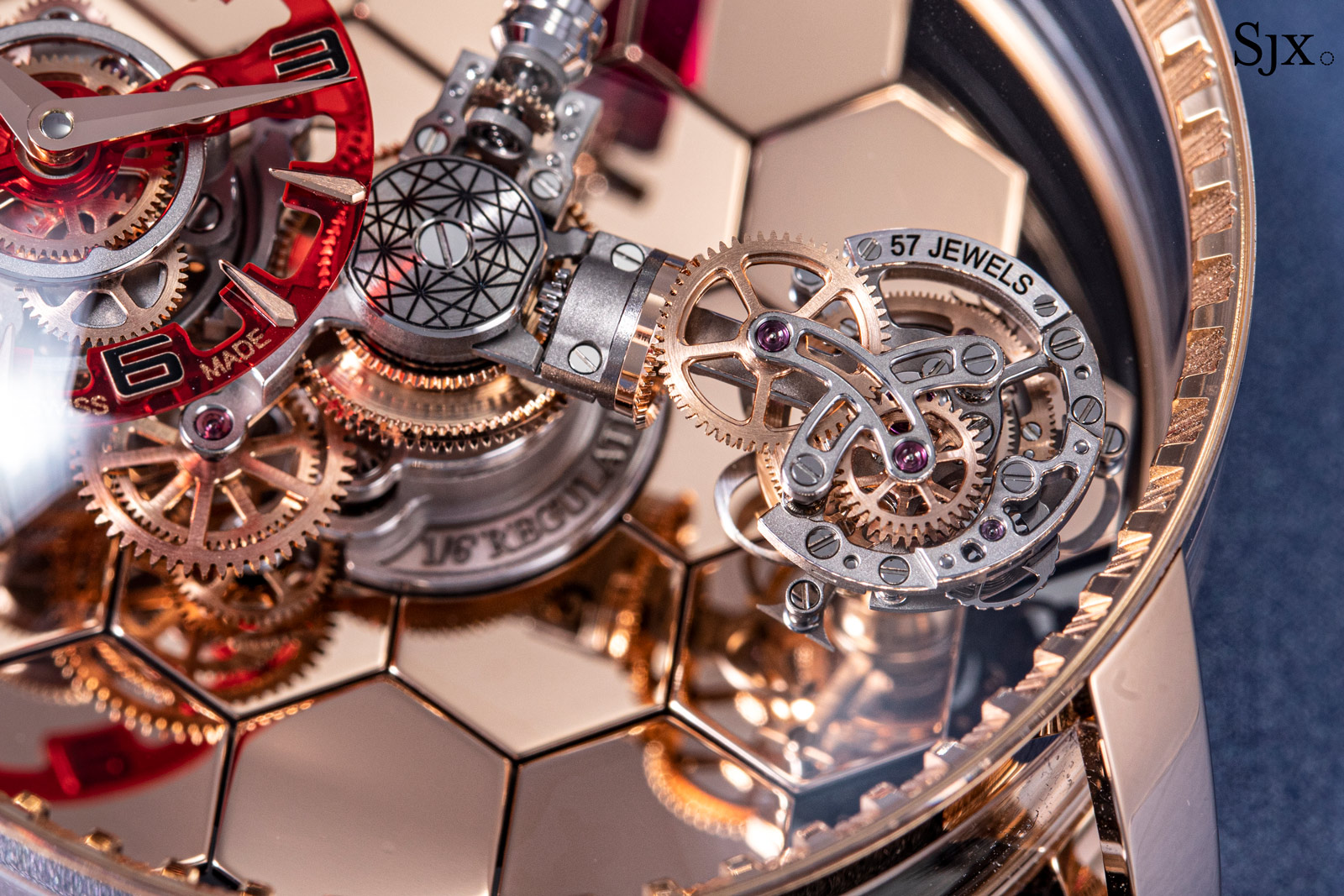
The use of a remontoir and the resulting step-by-step release of energy results in a corresponding step-by-step motion of the carousel. This is not really discernible to the eye since the remontoir works on a sixth-of-a-second cycle, but it is visible that the carousel’s motion is not as smooth as the seconds hand on a conventional, 4 Hz movement.
And in the long run, the enormous force generated by the twin barrels along with the many, many gears required to run the carousel presumably creates more friction, and consequently more wear and tear. That would lead to shorter service intervals, in theory at least. In practice I expect service intervals to remain unchanged, since such watches are rarely worn often or regularly for long periods.
In some ways, the Astronomia Revolution movement is reminiscent of a drastically different watch from a drastically different brand, the Lange 31 from A. Lange & Söhne.
The Lange 31 too had a pair of similarly-long mainsprings that provided a 31-day power reserve. In contrast, the Astronomia Revolution has a mere 36-hour power reserve because so much power is expended to move the carousel. And like the Astronomia Revolution, the Lange 31 required a remontoir to handle the energy stored in the mainsprings, but the Lange’s constant-force mechanism was installed in between the mainsprings and escapement.
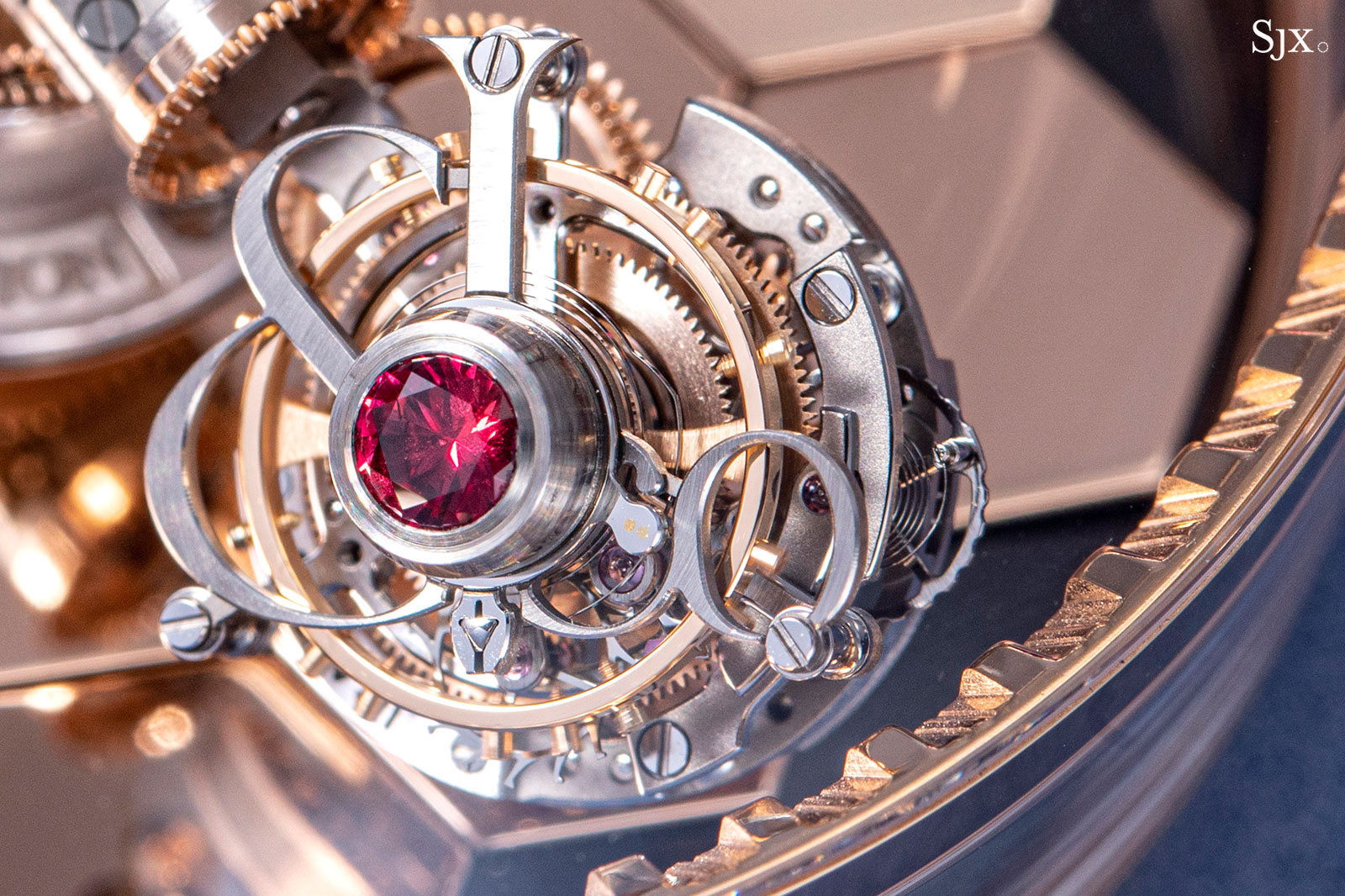
The constant force mechanism is visible to the right of the ruby bearing
Although a watch like the Astronomia Revolution is entirely about the design, complication, and visual performance, the movement is decorated well in an industrial-haute horlogerie manner, namely machine-applied decoration with touches of hand finishing. There are a great deal of components visible, and most have been properly treated. The underside of the tourbillon carriage, for instance, is frosted, bevelled, and countersunk.
The material of the sub-dial is the only element of the watch that feels out of place. Even though polycarbonate is a high-strength plastic and can be had in fancy forms, it doesn’t feel appropriate in a watch of this cost. Having the sub-dial in clear sapphire would certainly be better, albeit more costly, or simply anodised aluminium, which is both cost efficient and lightweight.
Concluding thoughts
Seeming like yet another Astronomia – and there have been many of them – the Astronomia Revolution is actually an unexpectedly interesting watch. Jacob & Co., along with Concepto, managed to create a movement with an impressive level of engineering and an equally impressive visual performance.
More importantly, the entire watch is coherent from design to complication to tactile feel. It’s over the top and too much, but also clever and just right.
Key facts and price
Jacob & Co. Astronomia Revolution
Ref. AT170.40.AB.AB.ABRUA
Diameter: 47 mm
Height: 27 mm
Material: 18k rose gold
Crystal: Sapphire
Water-resistance: 30 m
Movement: JCAM48B
Functions: Hours, minutes, rotating-arrow seconds indicator, constant force mechanism, and double-axis tourbillon
Winding: Hand wind
Frequency: 21,600 beats per hour (3 Hz)
Power reserve: 36 hours
Strap: Cordura with folding clasp
Limited edition: Six pieces
Availability: From Jacob & Co. boutiques and retailers
Price: US$600,000 without taxes
For more information, visit Jacobandco.com.
Back to top.

